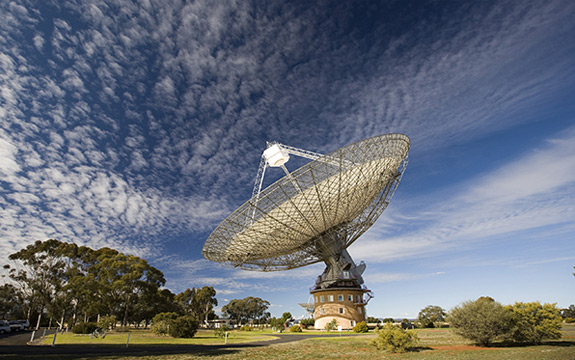Matthew Bailes to join international team in new $100 million search for alien life

In Summary
Professor Matthew Bailes, ARC Laureate Fellow at Swinburne’s Centre for Astrophysics and Supercomputing, will join an international team in a new US$100 million collaboration to find extra-terrestrial life.
The project, funded by Russian billionaire Yuri Milner and administered by the Breakthrough Prize Foundation, will use some of the world’s largest radio telescopes to search for radio signals that could indicate the existence of intelligent life elsewhere in the universe.
Professor Bailes will lead the Australian team designing a new supercomputer for the Parkes telescope in New South Wales – depicted in the Australian movie The Dish – as part of the decade-long search.
He will also work with international collaborators to develop the custom-built signal processing technology and algorithms required to analyse the distant radio signals picked up by the search.
“The petaflop signal processing system we'll develop in partnership with our collaborators at Berkeley and CSIRO will use the latest technologies to harness the power of the huge radio spectrum available to us,” Professor Bailes said.
“It will be possible to not only search for aliens, but also naturally-occurring astrophysical phenomena at the same time."
"We're thrilled to be part of this extraordinary project.”
The search will be 50 times more sensitive than previous searches for extraterrestrial intelligence, covering ten times more sky and scanning at least five times more of the radio spectrum – and doing so 100 times faster than previously possible.
The project was announced in London on Monday 20 July at a ceremony involving cosmologist Stephen Hawking, Astronomer Royal Lord Martin Rees, SETI pioneer Frank Drake, author Ann Druyan and investor Yuri Milner.
The search will use 25 per cent of the Parkes telescope’s time for five years from July 2016. It will also use the Green Bank telescope in West Virginia, operated by the US National Radio Astronomy Observatory, and a telescope at the University of California’s Lick Observatory.
All data from the search will be shared with the public, making it the largest data-sharing science project in the world.
Professor Matthew Bailes was awarded a prestigious Laureate Fellowship by the Australian Research Council to transform the largest telescope in the southern hemisphere into a machine that will attempt to count the number of atoms in the Universe. Read his story.

